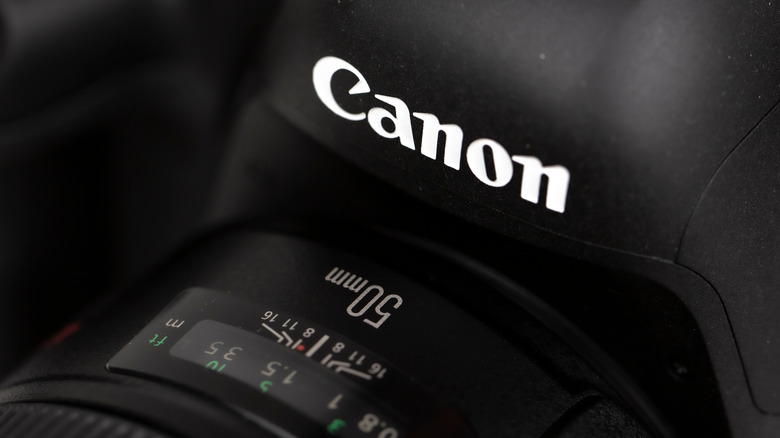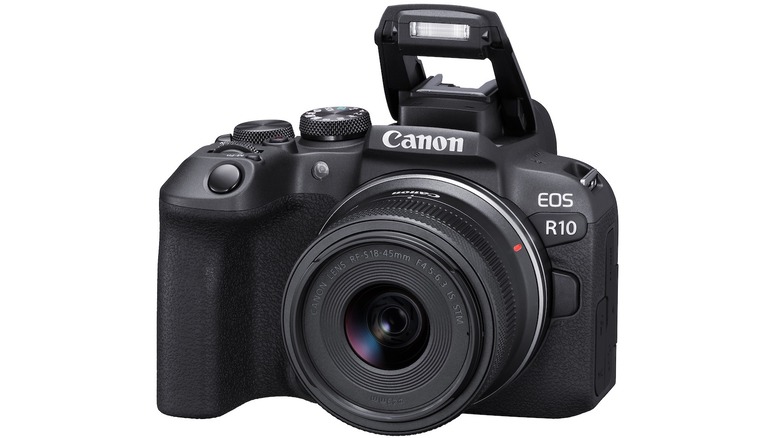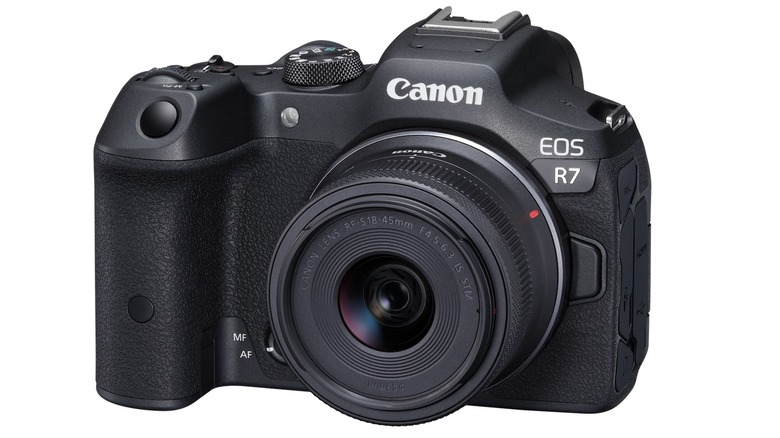Canon Reveals EOS R7 And R10 Cameras With APS-C Sensors
Even though Canon was a bit late to join the party, the company has, over the past few years, become a big proponent of mirrorless cameras. In fact, as of December 2021, Canon held nearly 50% of the global mirrorless camera market share — far ahead of Sony, which essentially pioneered the segment when it launched the Alpha 7 back in 2013 (via Digital Camera World). In a move to further establish its leadership in the mirrorless segment, Canon announced the launch of two new EOS R-series cameras on May 24, 2022.
What makes these new cameras special is that they happen to be the company's first R-series models to get an APS-C sensor. Canon's existing RF-series cameras have all featured larger full-frame sensors. Along with these new cameras, Canon confirmed that it would launch new lenses designed specifically for its new and future RF-series cameras. Interestingly, these R-series lenses can also be used interchangeably with existing RF-series full-frame cameras. The new R-series camera also boasts excellent video capabilities with support for 4K video capture at up to 60 fps. In addition, the mechanical shutter on both cameras supports shooting at up to 15 fps, plus the model packs Canon's famous dual-pixel autofocus technology.
Canon EOS R7 and EOS R10: What's new?
The Canon EOS R7 — the higher-priced of the two models — uses a completely new 32MP sensor that is not found on existing APS-C cameras from the company. The R7 also borrows the fast dual-pixel autofocus system from its flagship R3 camera. On paper, this should translate to excellent autofocus speeds on par with high-end offerings from Sony. With the electronic shutter, the R7 supports image capture at 30 fps — going down to a still impressive 15 fps with the mechanical shutter. The R7 also supports In-Body Image Stabilization, is dust and moisture resistant, and supports dual memory cards. While Canon is reluctant to make significant changes to the controls on its cameras, it is trying out something different with the R7. For example, it has a single dial on the top, with the second dial sitting behind the focus point joystick.
Meanwhile, even though it's priced well below the R7, the Canon EOS R10 is still quite a capable machine, as well. Though the model's resolution goes down to 24MP, it still retains the R7's ability to shoot images at 15 fps with the mechanical shutter. With the electronic shutter, the R10 can still shoot at 24 fps. The R10 does not support in-body image stabilization, and the resolution on the OLED EVF is lower than what you'd find on the R7. Physically, the R10 (0.9 pounds) is quite a bit smaller than the R7 (1.3 pounds), with the latter weighing almost half a pound more.
Pricing and availability
Canon is yet to announce an availability date for all the products it announced today. We do know that both of these cameras will be available for sale starting in ”late 2022." Canon also announced the launch of two new lenses earmarked for the new R-series. These include the RF-S18-150mm F3.5-6.3 IS STM lens which will be available for around $479, while the RF-S18-45mm F4.5-6.3 IS STM lens will set you back by an estimated $299.99.
As for the cameras, the Canon EOS R10 camera body will be priced at around $979.99. The camera, along with the Canon RF-S18-45mm F4.5-6.3 IS STM lens, will set you back by roughly $1,099. With the Canon RF-S18-150mm F3.5-6.3 IS STM lens, the EOS R10 will have an estimated retail price of $1,379. Moving on, the body-only Canon EOS R7 will set you back by around $1,499, while the same with the RF-S18-150mm F3.5-6.3 IS STM lens is expected to retail for around $1,899.


